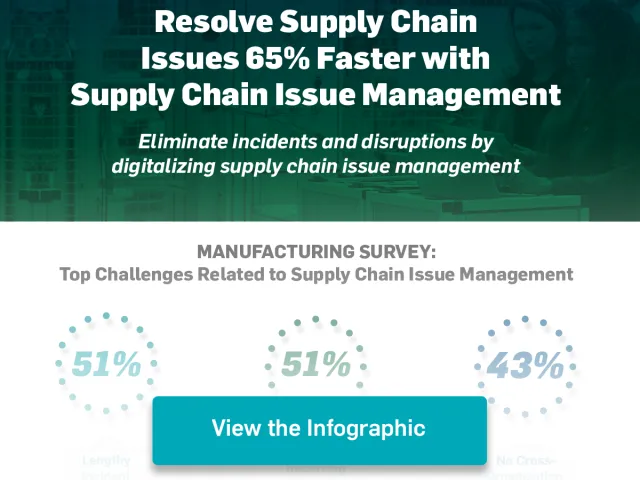Table of contents
It’s no exaggeration to say that before the pandemic, few people outside of procurement thought much about supply chains. Now, as a result of various global disruptions, there isn’t a single day that goes by without a significant supply chain headline.
Earlier in June, the Biden administration reported on the findings of Executive Order 14017, “America’s Supply Chains,” its 100-day review of critical supply chains. Based on these findings, the administration intends to take immediate action to further strengthen supply chains and promote economic security, national security, and higher quality employment.
The White House announced immediate action to address vulnerabilities and strengthen resilience to address near-term supply chain disruptions. It identified four priority areas: semiconductor manufacturing and advanced packaging; large capacity batteries, like those for electric vehicles; critical minerals and materials; and pharmaceuticals and active pharmaceutical ingredients (APIs).
“The supply chain reviews reinforce the need for the transformative investments proposed in the President’s American Jobs Plan,” the White House stated.
The focus of the report is on building resilience within the supply chains of the United States itself and reducing reliance on global markets. To this end, it promises that several Federal departments and agencies will work together to “develop comprehensive strategies for revitalizing six industrial bases: defense, public health and biological preparedness, information and communications technology, energy, transportation, and agriculture and food production.”
There is, however, a recognition that there are limits to what can be achieved domestically: the U.S. “must take steps to ensure that the manufacturing and mining that takes place abroad supports supply chain resilience and meets high labor and environmental standards.”
What will all of this mean for procurement professionals in the United States and their counterparts in subsidiaries abroad?
Coronavirus and other disruptions
The coronavirus pandemic has presented a huge challenge to globalization. It’s also been a source of disruption for many procurement professionals, along with other obstacles such as natural disasters and canal blockages. These act as a constant reminder that we need to think again about global supply chains and consider looking for local suppliers through domestic production and nearshoring. When you factor in risk and risk mitigation as costs, “low-cost suppliers” from the other side of the world don’t always add up to a good deal.
At the same time, there is a danger posed by any return to economic nationalism, which will increase costs, cause further supply chain disruptions, and raise trade barriers.
After all, problems are springing up everywhere that escape the control of national governments. The Ningbo-Zhoushan in China, the world’s third-busiest container port, was at a standstill after one worker tested positive for coronavirus. The resulting backlog has impacted global supply chains. In California, ports were overwhelmed by a 60% increase in shipping volume (and are still overwhelmed today). There have been lengthy transport stoppages on the Panama Canal due to maintenance work, while in Europe a chronic shortage of lorry drivers (which is also an acute shortage in the UK) is causing delays in road transport deliveries, and a series of strikes by German train drivers has disrupted rail freight. All of this means you may face issues such as late shipments and material shortages, just when demand is increasing. Poor communication among buyers and suppliers, as well as a lack of visibility into the supply chain, can make it so these issues take weeks to resolve. And a lot of these issues are recurring because the information on how to effectively resolve them isn’t being shared among supply chain partners.
Data, visibility and collaboration are key
But that’s the headlines. Then there are the procurement professionals tasked with actually solving these problems.
All of this presents an opportunity for procurement professionals to step forward and work with business leaders to ensure they understand how the world at large benefits from interdependent global supply chains.
However, procurement must put itself in a position to act. The greatest challenge within any organization is to detect and respond to supply chain issues in advance. To do this, you need three things:
- First, the ability to capture, analyze, and share data on global supply chain movements and disruptions
- Second, visibility right across your organization into global supply chains with early warnings before issues become acute, and the ability to prioritize
- Third, structured processes and workflows that enable you to collaborate with internal stakeholders and subject matter experts, suppliers, and customers to resolve the issues
Without these, procurement is likely to be in permanent panic mode, with endless meetings, phone calls, and email exchanges only adding to the confusion. With these, though, you may be able to prevent 35% of supply chain issues from arising in the first place and resolve those that do arise 65% quicker than you can now. What’s more, these figures will improve further as you build up a history of supply chain events and root cause analysis of disruptions.
Integrating advanced digital technologies will help procurement and supply chain professionals weather both localized issues, such as supply chain bottlenecks, and the next global crisis. And in so doing, procurement will play a heroic role in meeting the objectives set out in E.O. 14017.
TraceLink Supply Chain Issue Management (SCIM) is a collaboration solution for capturing, analyzing, resolving, correcting, and preventing supply chain issues.
SCIM’s dashboards provide actionable visibility at all levels of the organization and to end-to-end supply chain partners. You can drill down from these dashboards into individual incidents, assign them to the right team of subject matter experts, and start the resolution process. Pre-built incident management processes and a change request process ensure that you can collaborate and report on actions and outcomes across the entire organization.
In a world of increasingly fragile supply chains, supply chain issue management has become imperative. How effectively can you navigate these disruptions?







